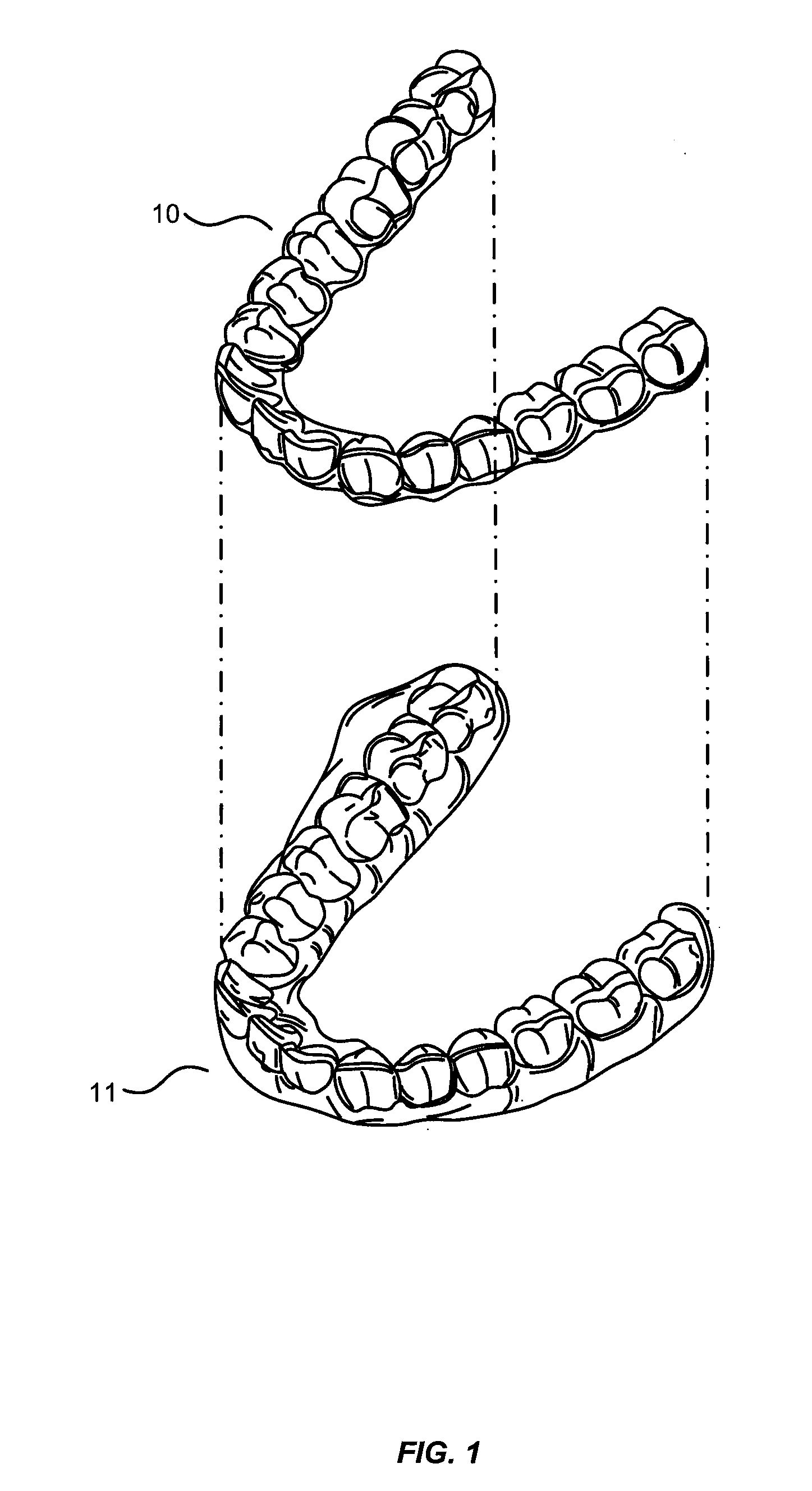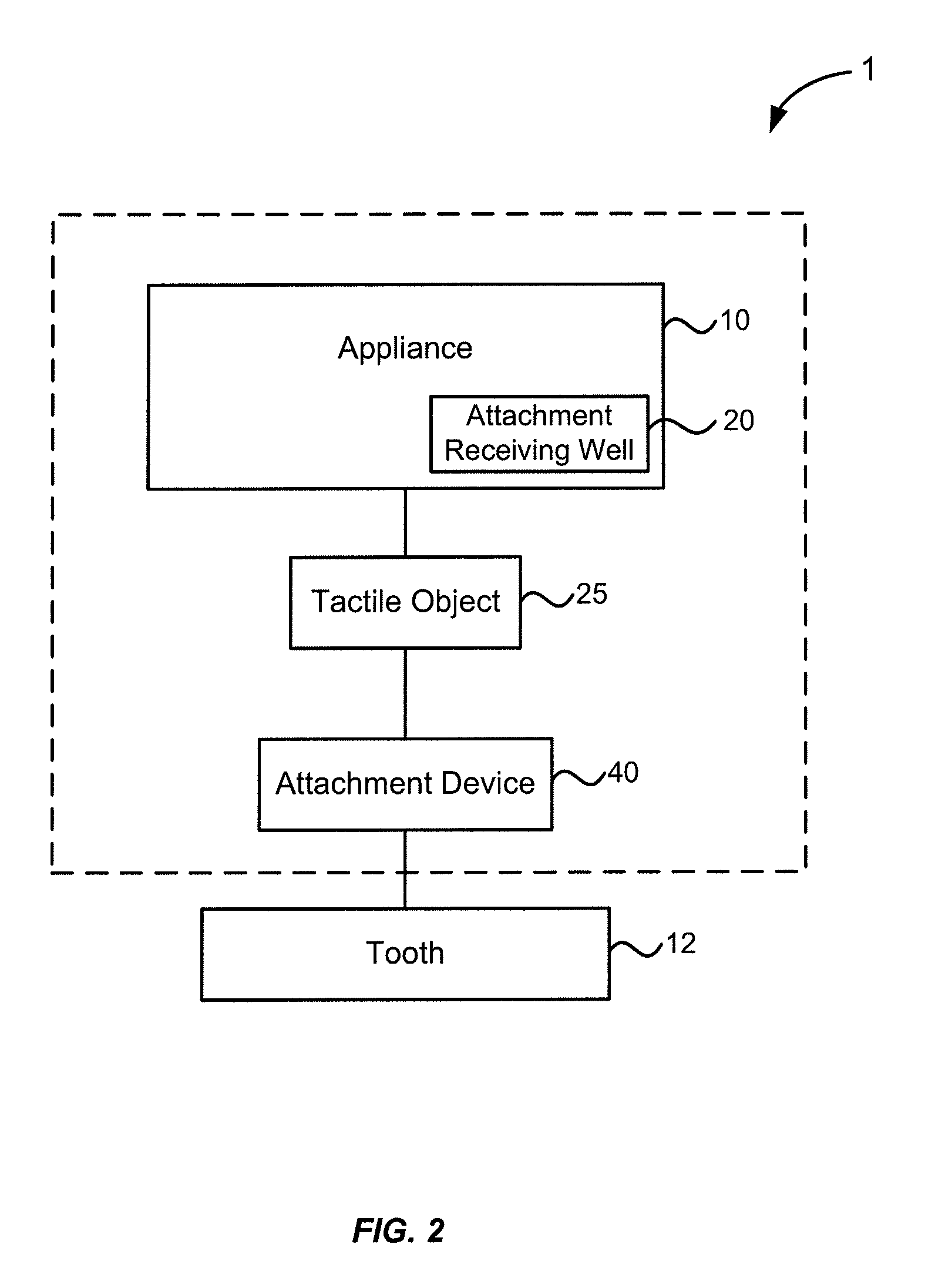Tactile objects for orthodontics, systems and methods
a technology of orthodontics and objects, applied in the field of orthodontic appliances, can solve problems such as errors, attachments made by practitioners may not be compatible, and appliance/attachment engagement errors
- Summary
- Abstract
- Description
- Claims
- Application Information
AI Technical Summary
Benefits of technology
Problems solved by technology
Method used
Image
Examples
first embodiment
[0089]FIG. 7A illustrates a method 100 for fabricating an appliance 10 according to a In step 102, a representation of a patient's teeth in a selected arrangement is received. The selected arrangement in particular, and the representation in general, will depend upon the purpose of the particular appliance 10 being defined. Where the appliance 10 will be used to apply positioning forces to constrain a patient's teeth in their current arrangement, the selected arrangement can correspond to the current arrangement of the patient's teeth. Where the appliance 10 will be used to apply repositioning forces to move the patient's teeth from their current arrangement toward a subsequent arrangement, the selected arrangement will typically deviate from the current arrangement of the patient's teeth.
[0090]In step 104, selected teeth of the received representation are optionally modified. This optional modification can include any number of the teeth, from one to all. A wide range of modificat...
second embodiment
[0094]FIG. 7B shows a method 150 for fabricating an appliance 10 according to a In step 152, a digital definition of an appliance is received. The digital definition as received may include adjustments as described above in steps 106 and 108 with respect to FIG. 7A. Additionally or alternatively, the digital definition may be adjusted as described above in steps 106 and 108 after being received.
[0095]In step 154, an appliance 10 is directly fabricated using the digital definition from step 152. Various known manufacturing processes can be used to directly fabricate an appliance 10. In one approach, the appliance 10 is formed by a stereo-lithography fabrication machine, where resin is selectively hardened in the shape of the digital definition.
[0096]FIG. 8A shows a method for fabricating a dental template to position an attachment 40 and a tactile object 25 on a patient's tooth 12. In step 210, a patient's tooth 12 is digitized. Next, in step 212, a virtual representation of the att...
PUM
| Property | Measurement | Unit |
|---|---|---|
| resilient positioning force | aaaaa | aaaaa |
| elasticity | aaaaa | aaaaa |
| force | aaaaa | aaaaa |
Abstract
Description
Claims
Application Information
 Login to View More
Login to View More - R&D
- Intellectual Property
- Life Sciences
- Materials
- Tech Scout
- Unparalleled Data Quality
- Higher Quality Content
- 60% Fewer Hallucinations
Browse by: Latest US Patents, China's latest patents, Technical Efficacy Thesaurus, Application Domain, Technology Topic, Popular Technical Reports.
© 2025 PatSnap. All rights reserved.Legal|Privacy policy|Modern Slavery Act Transparency Statement|Sitemap|About US| Contact US: help@patsnap.com



